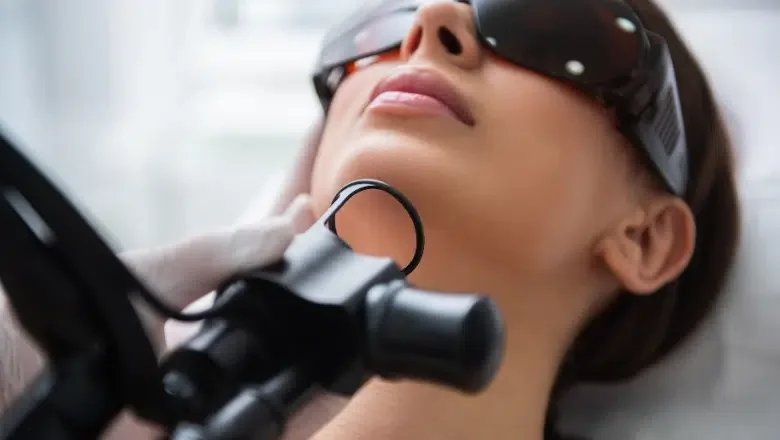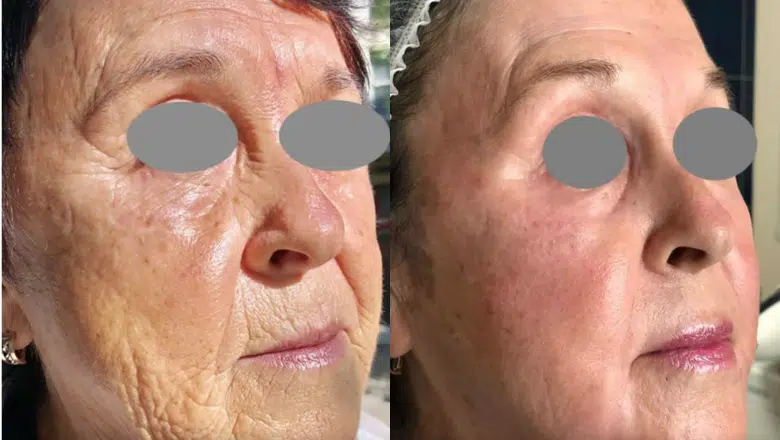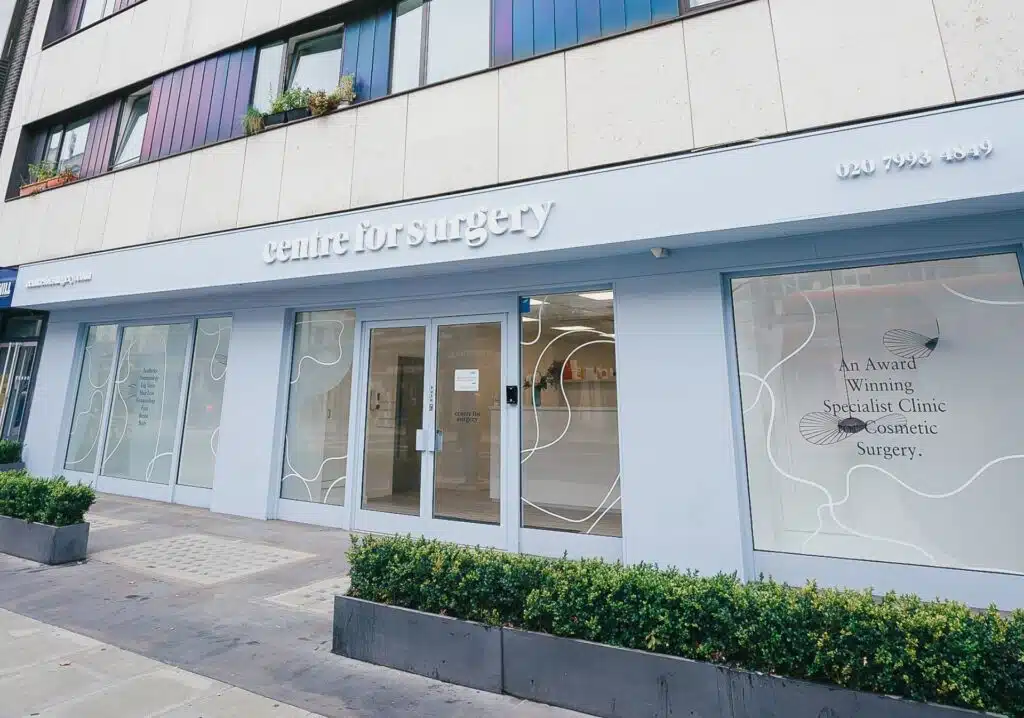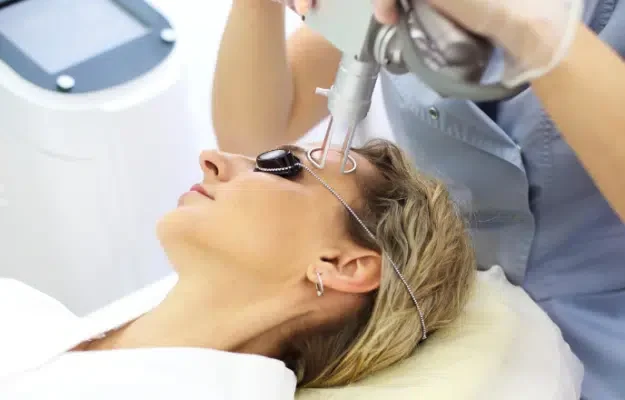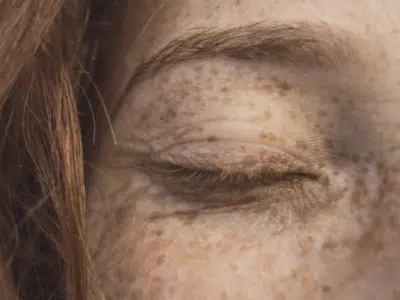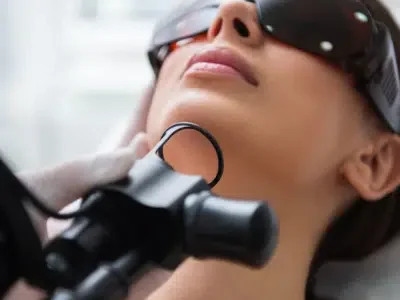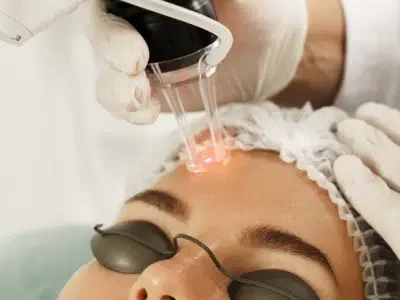After undergoing a full ablative laser skin resurfacing, it’s crucial to give your makeup a rest for no less than 10 days. This pause is essential to sidestep any risk of infection while your skin is on its healing journey. In the fortnight that follows your procedure, your new skin will be in a delicate state, needing gentle care. To aid in this critical period, you’ll receive comprehensive guidance on which skin ointments are best for you and the frequency of their application.
What is laser skin resurfacing?
Laser skin resurfacing stands as a revolutionary technique in the realm of cosmetic treatments, offering a promising solution to a variety of skin concerns. This advanced procedure leverages the precision and power of laser technology to target and rectify specific skin issues, aiming for an enhanced overall skin appearance. The core principle behind laser skin resurfacing involves the deliberate application of either ablative or non-ablative lasers, each selected based on the individual’s skin condition and desired outcomes.
RELATED: Laser Skin Resurfacing vs Chemical Peels: Which is Better?
Delving into the specifics, non-ablative lasers represent a gentler approach compared to their ablative counterparts. The key distinction lies in their method of action; non-ablative lasers carefully bypass the epidermis, which is the outermost layer of skin. By focusing their energy directly onto the dermis, which lies beneath the surface, these lasers heat the underlying skin layers without causing overt damage to the top layer. This targeted heating is pivotal in stimulating the natural production of collagen, a vital protein that plays a crucial role in skin elasticity and firmness. As collagen levels increase, the skin gradually regains a more youthful and revitalised appearance, making non-ablative laser treatments a preferred option for those seeking minimal downtime and a non-invasive path to skin rejuvenation.
Conversely, ablative laser treatments embrace a more aggressive approach, harnessing the capabilities of erbium YAG technology to meticulously remove the epidermis. While this might sound daunting, the precision of the laser ensures that the process is controlled and focused, minimizing the risk of damage to surrounding tissues. Simultaneously, the heat generated by the laser extends into the dermis, providing a dual-action benefit. This not only facilitates the removal of damaged or aged skin layers but also stimulates the underlying skin to produce new collagen. The result is a more dramatic improvement in skin texture, tone, and clarity, addressing issues such as deep wrinkles, significant sun damage, and other pronounced skin imperfections. The trade-off, however, comes in the form of a longer recovery period, with the skin needing time to heal and regenerate after the treatment.
What are ablative lasers?
Ablative lasers are at the cutting edge of cosmetic technology, offering transformative results for individuals seeking a significant improvement in their skin’s appearance. This method stands out for its ability to deliver remarkable changes in just a single session, targeting deep wrinkles, pronounced sagging, and severe acne scars with precision and effectiveness. However, the intensity of ablative laser treatments comes with a need for a more extended recovery period, making it a commitment that patients need to be prepared for.
At the heart of an ablative laser procedure is the laser’s ability to meticulously remove the epidermis—the outermost layer of skin. This process exposes the underlying dermal layer, which, although raw and more sensitive post-treatment, is the foundation for the regeneration of healthier, smoother skin. The removal of the epidermis and the subsequent heating of the dermis stimulates a robust production of collagen, the protein responsible for the skin’s elasticity and youthful firmness. Patients witness a dramatic reduction in skin imperfections as the treated area heals, revealing a tighter, more refined complexion.
Given the invasive nature of ablative laser treatments, patient comfort and safety are paramount. To this end, various forms of sedation and anaesthesia are employed to ensure a pain-free experience. Intravenous (IV) sedation or general anaesthesia is commonly administered, depending on the extent of the procedure and the patient’s needs. For those undergoing more localised treatments, topical numbing creams and injectable lidocaine are used to desensitise the skin, making the procedure more tolerable. In certain scenarios, inhalational anaesthesia may also be offered, further easing any discomfort.
Candidates for ablative laser resurfacing are typically those grappling with significant skin issues that less invasive methods cannot adequately address. These include deep-set wrinkles, extensive sun damage, and profound acne scarring. Patients opting for this treatment are usually in a position to take time off from their daily commitments, allowing for a focused recovery period at home. Investing time and care during the healing process pays off, as most patients emerge from recovery without the need for subsequent treatments, enjoying long-lasting improvements to their skin’s texture and appearance.
What are non-ablative lasers?
Non-ablative lasers represent a less invasive alternative in the spectrum of laser skin treatments, catering to individuals seeking improvement for mild to moderate skin issues without the extensive downtime associated with more aggressive procedures. This technology is adept at addressing a variety of concerns, including moderate sun damage, acne scars, melasma, and the early signs of ageing, such as fine lines. It stands out for its ability to enhance skin texture and impart a radiant, youthful glow to the treated areas.
The core mechanism behind non-ablative lasers involves the targeting of the dermis, the deeper layer of the skin, while leaving the surface layer, or epidermis, intact and unharmed. This selective approach allows for the stimulation of collagen production beneath the skin’s surface without necessitating a lengthy recovery period. The heat generated by the laser in the dermis promotes the natural healing process, leading to the gradual improvement of the skin’s overall appearance. As new collagen is formed, the skin becomes firmer, smoother, and more even in tone.
One of the appealing aspects of non-ablative laser treatments is their relative comfort. Typically, a topical numbing cream is applied to the treatment area beforehand to minimise any discomfort, making the procedure well tolerated by most patients. Unlike more aggressive laser treatments that require significant downtime for healing, non-ablative laser treatments allow patients to return to their daily activities with little to no interruption. This makes it an attractive option for those looking to enhance their skin’s appearance without the need for a prolonged recovery period.
Ideal candidates for non-ablative laser treatments are individuals with mild to moderate skin concerns who are seeking noticeable improvements in their skin’s texture and appearance. This includes those with fine lines, early signs of ageing, or minor skin imperfections who prefer a gentler approach to skin rejuvenation. While a single session can provide benefits, optimal results are typically achieved through a series of treatments. This allows for a progressive improvement in skin quality, making it a versatile option for those committed to achieving and maintaining a healthier, more youthful complexion.
How long does it take to recover from laser skin resurfacing?
The journey to recovery after laser skin resurfacing is a crucial aspect of the treatment process, with the duration varying significantly depending on the type of laser technology employed. Understanding the recovery timeline can help set realistic expectations and prepare for the healing phase, ensuring a smoother and more comfortable experience.
Ablative Laser Recovery
Ablative laser treatments involve an intensive process that removes the outer layer of skin to stimulate deep tissue regeneration. This approach leads to a more pronounced healing phase, characterized by an appearance akin to a severe sunburn. The treated area may show signs of redness, rawness, and, in some cases, oozing. Such effects are part of the natural healing process as the skin works to repair and renew itself. The initial 24 hours after treatment may bring a sensation similar to a sunburn’s sting, although this is typically manageable without the need for pain medication.
RELATED: Is Laser Skin Resurfacing Painful?
The application of an antibiotic ointment is advised for the first week to aid in the healing process and prevent infection. Following this, an occlusive ointment is recommended to keep the skin moist and support the regeneration process. By around days 10 to 14, a shift to a bland moisturiser is suggested, marking the transition towards less intensive care as the skin begins to heal and normalise.
Non-Ablative Laser Recovery
Non-ablative laser treatments are known for their more gentle approach, focusing energy beneath the skin’s surface while preserving the epidermis. This method results in minimal downtime, making it an attractive option for those seeking improvement without significant interruption to their daily activities. After a non-ablative laser session, it’s common for patients to encounter some mild redness and swelling, akin to a slight sunburn. These symptoms are typically short-lived, fading within a few days up to a week. Remarkably, the convenience of non-ablative lasers allows most individuals to resume work and their usual routines immediately, with little need for an extensive recovery period. The mild nature of the side effects means that life can continue as normal for most, albeit with a brief period where the skin may appear slightly flushed or feel sensitive.
How much does laser skin resurfacing cost?
Laser skin resurfacing is a very popular cosmetic procedure, celebrated for its effectiveness in enhancing skin texture, tone, and overall appearance. Given its popularity, particularly in London, understanding the factors influencing the cost is crucial for those considering this treatment.
The price range for laser skin resurfacing in London is notably broad, starting from around £800 and potentially exceeding £6,000. Such a wide variance in cost is attributed to several key factors, including the specific areas being treated, the type of laser technology selected, and the expertise and reputation of the specialist performing the procedure.
Is Laser Skin Resurfacing worth it?
Laser skin resurfacing has cemented its position as a highly effective treatment for a wide array of skin concerns, from the mildest issues to more severe conditions. Its versatility and efficacy in addressing fine lines, deep wrinkles, sagging, uneven skin texture and tone, dynamic wrinkles such as crow’s feet and smoker’s lines, as well as acne scars, make it a preferred choice for individuals seeking noticeable skin improvements.
Tailored Treatments for Diverse Skin Needs
At the heart of laser skin resurfacing is the use of advanced laser technologies, each suited to different types of skin concerns and desired outcomes. The choice between erbium YAG and CO2 lasers for either fractionated or fully ablative resurfacing, or the Erbium glass laser for non-ablative resurfacing, allows for a highly customised approach to skin rejuvenation.
- Erbium YAG and CO2 Lasers: These are utilized for more intensive treatments, such as fractionated or fully ablative resurfacing. Ideal for addressing deeper skin issues, these lasers are capable of significantly improving skin texture, reducing wrinkles, and tightening sagging skin. The process involves removing layers of skin in a precise manner, stimulating the regeneration of new skin cells and boosting collagen production for a firmer, smoother complexion.
- Erbium Glass Laser: For those with milder concerns or seeking a gentler approach, the Erbium glass laser offers an effective non-ablative treatment option. This method focuses on heating the underlying layers of the skin without removing the top layer, thereby stimulating collagen production and skin renewal with minimal downtime.
How Laser Resurfacing Works
The underlying principle of laser skin resurfacing is thermal destruction, a controlled process that strategically damages targeted cells. This damage prompts the skin to begin a natural healing process, during which damaged cells are sloughed off to reveal fresher, more youthful skin. Concurrently, the treatment stimulates the production of collagen, a key protein that contributes to the skin’s elasticity and firmness.
By precisely targeting areas of concern, laser skin resurfacing promotes the emergence of healthier, more radiant skin. The selection of the appropriate laser technology, based on an individual’s specific skin issues—be it sun damage, hyperpigmentation, wrinkling, sagging, or scarring—is crucial to achieving the best possible results.
A Customised Approach for Optimal Outcomes
Determining the most suitable laser option is a collaborative process between the patient and practitioner, taking into account the extent of the skin issues and the desired end results. This bespoke approach ensures that each patient receives the most effective treatment tailored to their unique skin needs.
